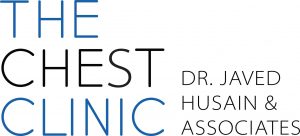Background:
The air in the atmosphere has 21 % oxygen. When we breathe the oxygen in the air is delivered through the breathing channels called bronchi and absorbed into the blood through tiny air sacs in the lungs called alveoli. It subsequently is delivered by blood to all the organs of the body. Oxygen is a necessary requirement for all organs and tissues to function. In the absence of oxygen organs and tissues will die.
In a normal healthy person, the Oxygen saturation (the amount of oxygen dissolved in blood and hemoglobin) ranges from 96-99%. When the oxygen saturation drops below 92%, organs and tissues of the body start getting damaged. Due to certain medical conditions causing weakness to the lungs or heart, the body is unable to keep the oxygen level above a critical level. Your doctor will prescribe supplemental oxygen to be taken to keep the levels above that critical level.
Advantage of Oxygen Therapy
Supplemental oxygen ensures adequate oxygen levels in the blood in patient s whose lungs are unable to maintain adequate levels of oxygen.
- By providing enough oxygen, the patients symptoms of shortness of breathing, the ability to exercise and overall energy all improve. In addition, patients with COPD taking supplemental oxygen results in improved overall survival.
- Improves ability to perform daily activities
- Reduces the need for hospital admission
- Improves the overall sleep quality by preventing the reduction of oxygen levels during sleep
How is Oxygen given ?
Oxygen is delivered through various methods.
- Oxygen cylinders: The commonest form and the easiest and cheapest modality in Pakistan. Compressed oxygen in tanks, usually for portable use
- Oxygen concentrators: Machines that work on electricity or battery, filter and concentrate oxygen from the ambient air. These are both stationary and portable.
- Oxygen is delivered either through nasal canula ( nasal prongs) or through an oxygen mask. Oxygen may also be attached through a CPAP or BiPAP.
How long does one need to take oxygen?
The duration and amount of oxygen is determined by your pulmonologist/ chest specialist. For certain reversible conditions like pneumonia or pulmonary edema (Water in the lungs), supplemental oxygen may be prescribed for a certain time frame. For other more chronic and advanced lung disease like severe COPD and Lung fibrosis Long term oxygen therapy (LTOT) may be prescribed. For these conditions, supplemental oxygen may be prescribed for 12-24 hours per day, depending upon the severity of oxygen desaturation.
Traveling and oxygen therapy
One can travel with portable oxygen cylinder or concentrator, depending on the mode of transport and oxygen requirements. Airlines have guidelines to cater to people who are oxygen dependent. Patients who have lung conditions that limit physical exercise should consult with their Pulmonologist before air travel. They may require supplemental oxygen
Safety considerations
It is important that you understand the proper method of using the oxygen equipment. It may be a fire hazard as oxygen supports combustion. Cigarette smoking or going close to a fire stove may be hazardous and should be avoided.
